Over time, Google has made various improvements to help users find quick answers to their searches. The featured snippet is one of the ways they ensure this is achievable. Today we are going to discuss 5 ways to rank on Google featured snippets.
Featured snippets refer to highlighted text excerpts at the top of Google’s search result page. This position is often referred to as ‘position zero.’ Google displays featured snippets as a prompt response to the user’s search query.
Here’s An Example:
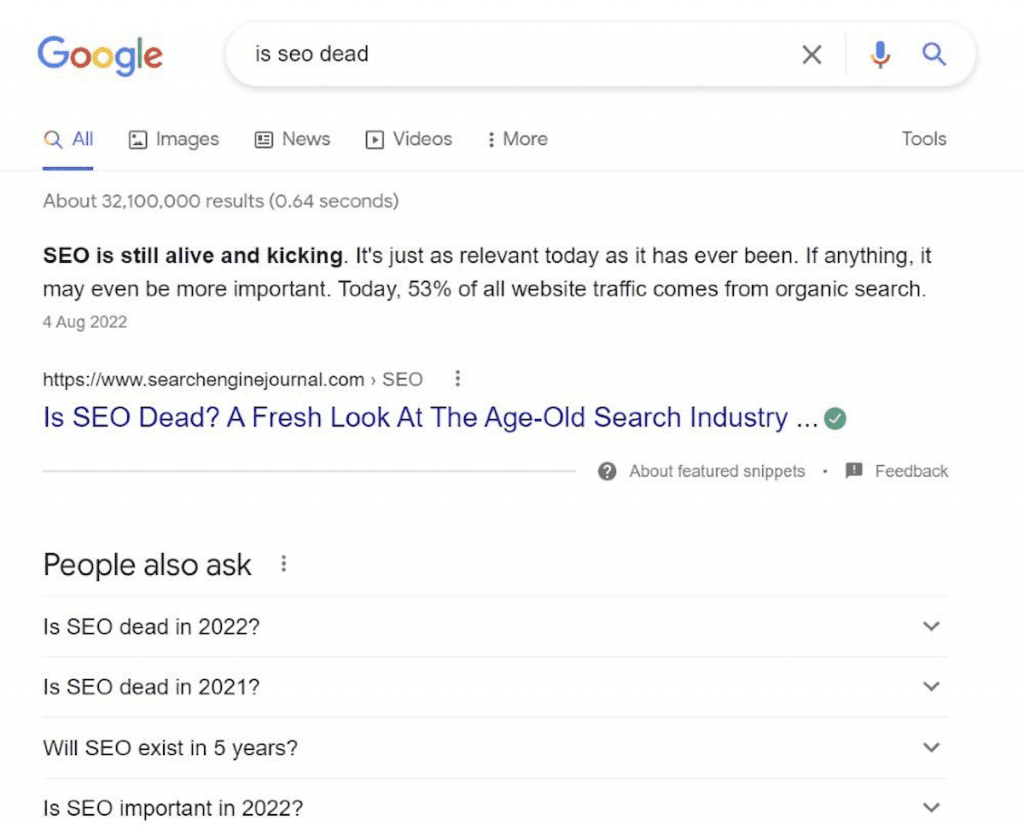
The Google-featured snippets are usually above the organic search results and are gotten from a website with relevant answers to the user’s query. These snippets could be in the form of a text, list, or table and can include images or a video.
Google-featured snippets could make up your website’s total clicks, which is one of the main reasons you should pay attention to them.
Let’s show you how to rank your site on the featured snippets.
1. Determine Search Intent
Search intent refers to “why” users type in a particular search query on Google.
In recent times, Google has tweaked its algorithms to discover users’ search intent and provide more likely content to meet their needs. Generally, the users’ search intent could be:
- Informational – this is where users want to know more about a particular topic. The searcher needs a guide, a definition, or a recipe. For example, when someone searches for “how to sell online” or “social media marketing tips.”
- Commercial – users are making inquiries about something they desire to buy in the future. They look for reviews or comparisons to help them make a good buying decision. Queries like “Best social media marketing tool” have commercial intent.
- Transactional – here, users want to make a purchase and are looking for a product page they can buy from. So, they type in the particular product they want to buy. For example, one who types “cheap social media marketing tool” already intends to buy the tool.
- Navigational – this is when users intend to visit a specific site. They know the web page they’re looking for and simply type it into the search bar alongside other keywords. So, someone who searches for “Hootsuite social media marketing tool” has navigational intent.
Bearing in mind that your prospect’s search intent could fall within any of the above categories, you’d be able to determine the type of content to create for various search intents. To make this more effective, you need to identify keyword modifiers that will help you target specific needs.
A keyword modifier refers to a word or set of words added to your main keyword to make it more specific. These modifiers could be in the form of adjectives, prices, size, usage, or locations. For example:
- Queries with words like “how,” “where,” “why,” and “what” are informational.
- Queries with “best or versus” are commercial.
- Queries with “quality, cheap, cost, price” are transactional.
While this is not an extensive list, the aim is to give you an idea of how modifiers can help you determine search intent.
You can also determine the search intent by looking at the type of results a keyword gets on the search engine results pages (SERPs). So, an informational keyword will have results from informative blog posts. Like the example below:

Commercial keywords will have results that involve reviews or comparisons. Like this:

For transactional keywords, you’ll most likely see results of product pages from different stores online. You’ll also see product ads here.
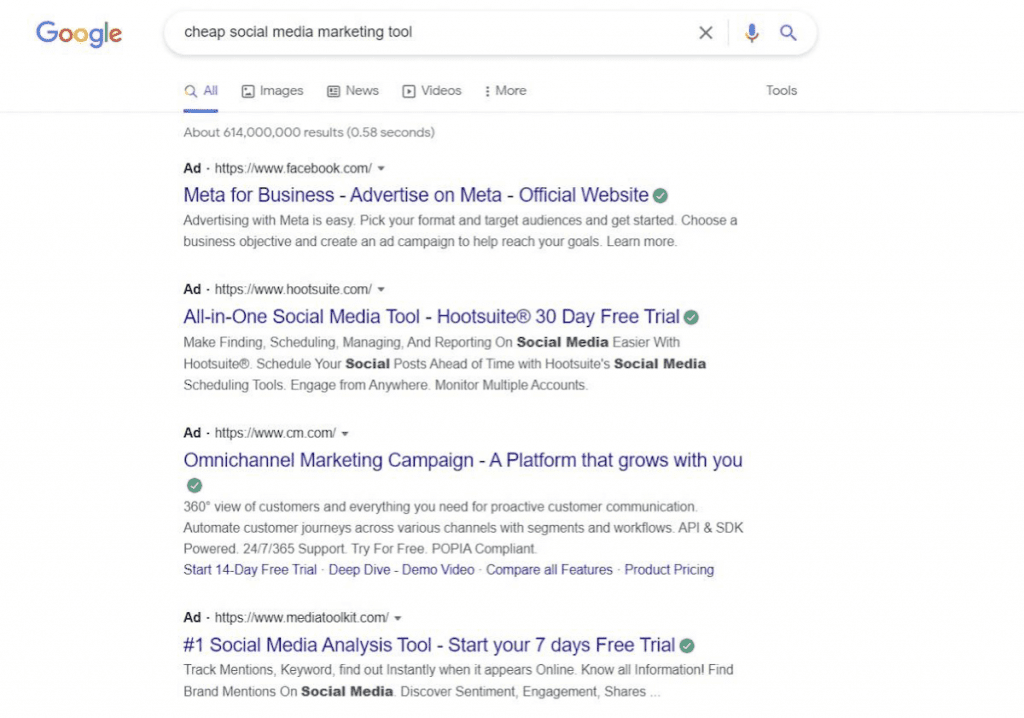
Finally, navigational keywords will have content from the specific site the user has typed into the search bar. See the Hootsuite example below:
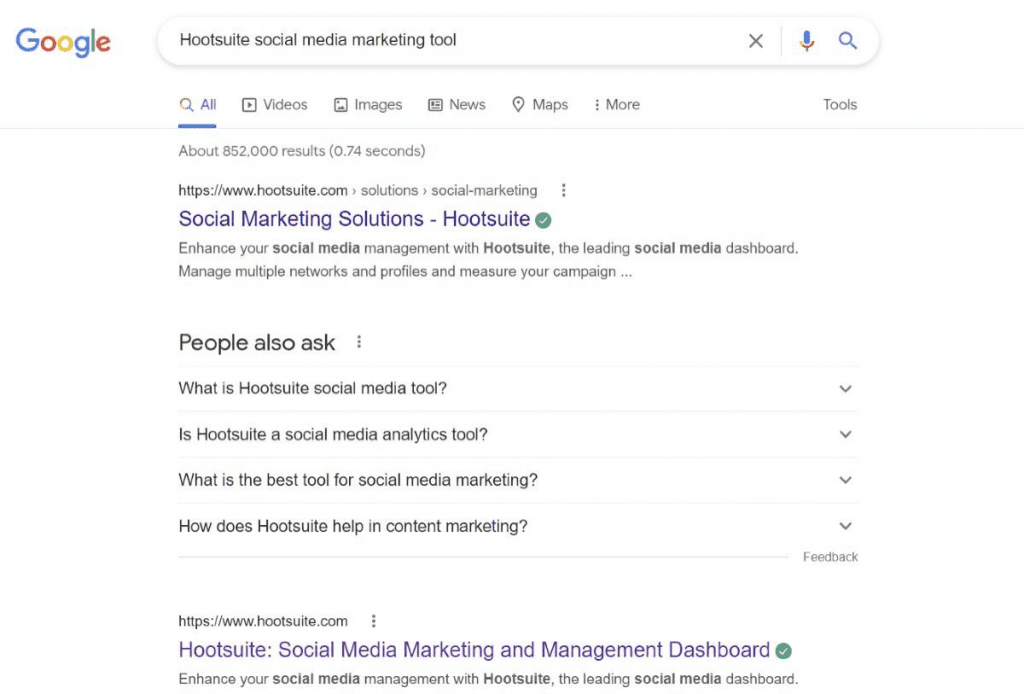
You should also look at the “People also asked for” section because you’ll find questions that inform you about the searchers’ intent.
2. Find Competitors’ Featured Snippets
After understanding search intent, the next step is spying on your competitors to see the featured snippets they’ve secured. Of course, you also want to check how that content is written and formatted.
Besides Google search, tools like Ahrefs site explorer also give you detailed insights into your competitor’s featured snippets. When you type a site’s URL into explorer, you’ll get results like the one below. You’ll see the list of queries the site ranks for and the various Google featured snippets they appear in.
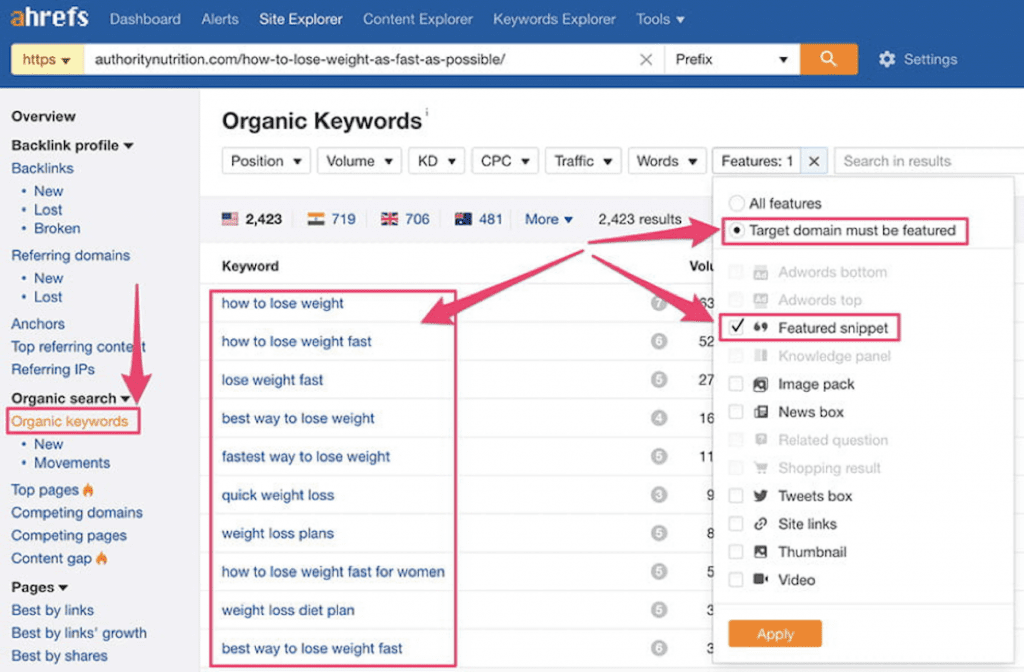
By observing your competitors’ featured snippets, you’re looking at how they have structured their content.
- Did they add the keywords in their headings?
- Did they provide a step-by-step guide?
- Did they answer the question with video content?
- Do they use any schema markup or structured data for their web pages?
- Did they provide direct answers in the form of bulleted lists, a paragraph, or a table?
From these questions, you will get answers that will help you structure your piece of content more effectively. In most cases, you’ll also identify content gaps you can fill to get ahead of the featured competitors.
It’s not all about the content format, though. Other SEO best practices also play a role in determining who appears in the featured snippets. So, use citations, build backlinks, optimize meta-tags, and apply other SEO practices to increase your chances of stealing the snippets from your competitors.
3. Make Use Of LongTail Keywords And Questions In Headings
Long-tail keywords are keywords or search terms that are longer (over three words) and more specific than the common types of keywords. For example, “what’s the best social media marketing tool?” features a long-tail keyword and is also formatted in a question.
Ahrefs revealed that most Featured Snippets appear when people search for long-tail keywords. Long-tail keywords are also less competitive, so including them in your content and headings will improve your chances of ranking as a featured snippet.
Also, users may type specific questions into the search bar when they need information. Therefore, adding questions that align with your searcher’s intent to your headings can get your content to Google’s featured snippets for a related query.
Once again, you can use the “People also ask” section on Google SERPs to identify questions you can include in your content.
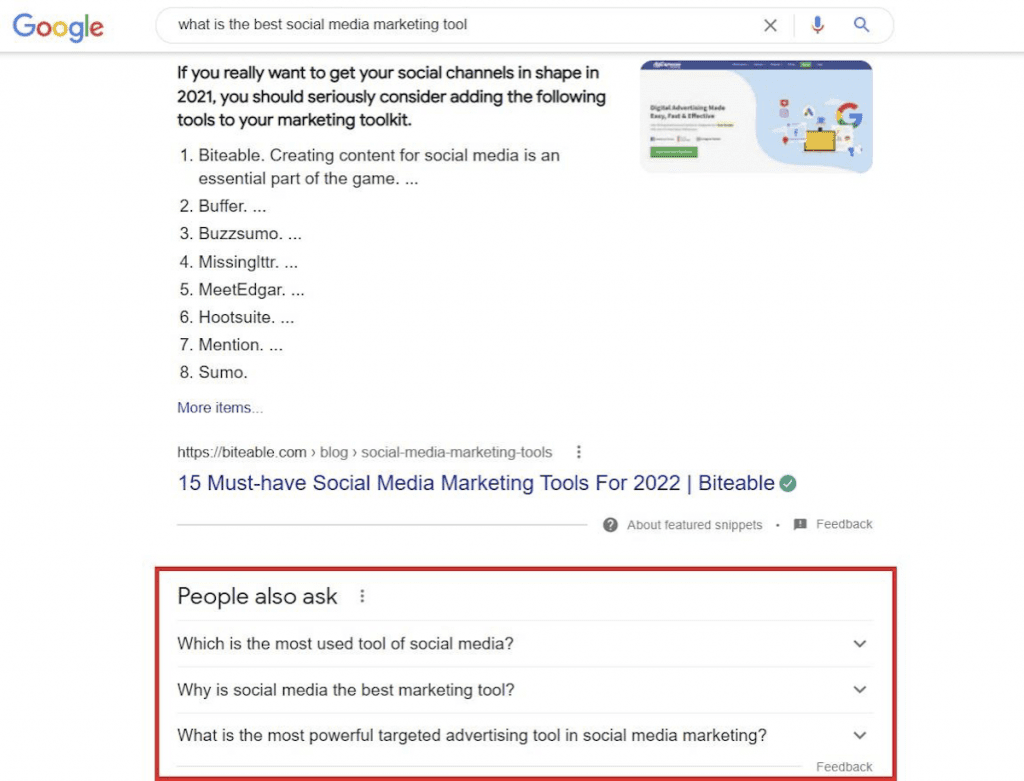
Keyword research tools like Ahrefs and Moz can also show commonly asked questions.
After identifying these questions, try to include them in your content as much as possible. Add the most critical questions in headings if possible. You may also create an FAQ section at the bottom of the page.
4. Organize Your Content
Not only does Google want to provide useful solutions to searchers, but it also wants to do this in the most helpful formats. This means that Google will prioritize well-organized content. This type of content is easy for readers and even search engines to scan and understand.
A proper content structure will have an introduction, a body broken into subheadings, and a conclusion. To optimize your content, use short paragraphs, heading tags (H1-H4), and helpful images where necessary.
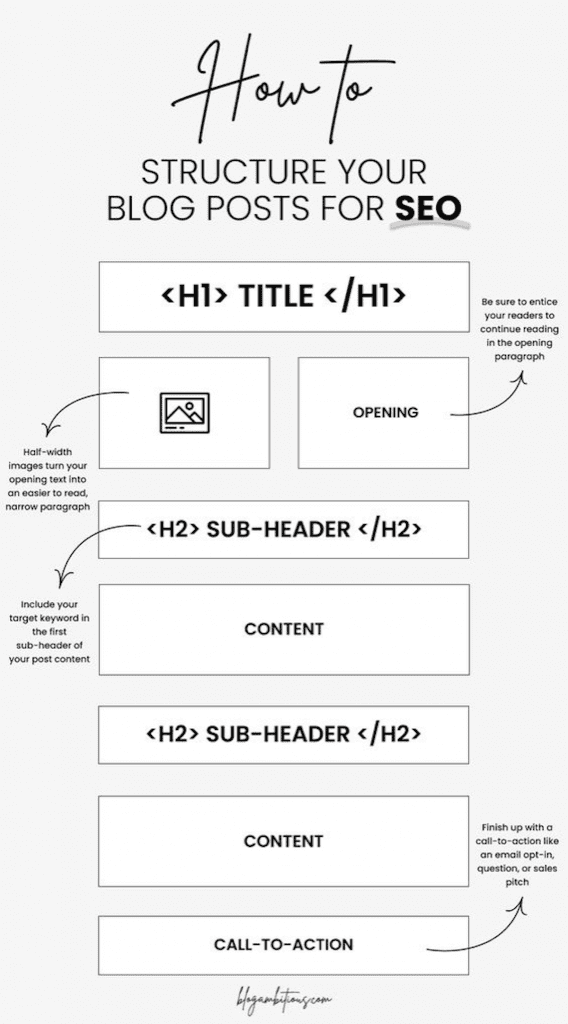
Adding a paragraph tag is helpful if you want your site to rank in a paragraph snippet. However, for list snippets, it’s advisable to number your points.
Lastly, be sure to include the keywords in the body of your content to inform the search bots about the search intent you have addressed. That may mean copywriting your content in a conversational tone.
5. Do Content Validation
You’ve worked hard to make engaging content worthy of Google’s featured snippets. Now it’s time to do a content validity check.
According to Google, one of the key steps in improving your site’s ranking is to ensure that it contains sufficient rich information with relevant (and appropriately used) keywords that indicate your content’s subject matter. This is what you want to look out for when you validate your content.
You also want to ensure that the content addresses your target audience and the user intent for which you want to be featured. Do this check, review your content goal, and make adjustments to any element or piece of information that deviates from the purpose of your blog post or web page.
By doing this, you place your content in a more advantageous position to be a featured snippet.
In Closing
Google has made it easy for business owners to connect with potential customers based on clearly-defined needs. One way to maximize this is through the featured snippets. Google extracts the featured snippets from content most relevant to a user’s search query, so you want to create content that meets this criterion.
To rank on Google featured snippets, you first need to determine the users’ search intent for your target keywords. Next, analyze the competitors’ featured snippets, then use relevant long-tail keywords and questions in your headings. Finally, create well-organized content and validate your content to ensure that it serves the needs of your prospects.
Put this guide to use and increase the possibility of having your content featured as a Google snippet. These 5 ways to rank on Google featured snippets should help you rank better. Please contact Matchbox Design Group to start a new SEO project.
Contact Matchbox Design Group Today!
If your website could use a refresh, if you’re looking to drive more traffic to your site, or you would like to submit a guest post, fill out the form below and we’ll contact you to learn more about your digital needs.



